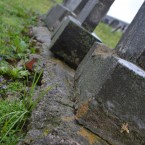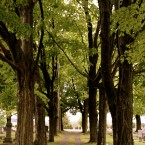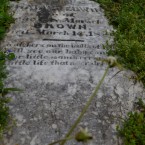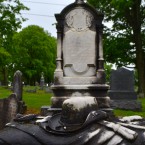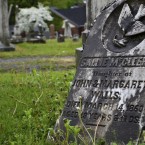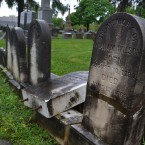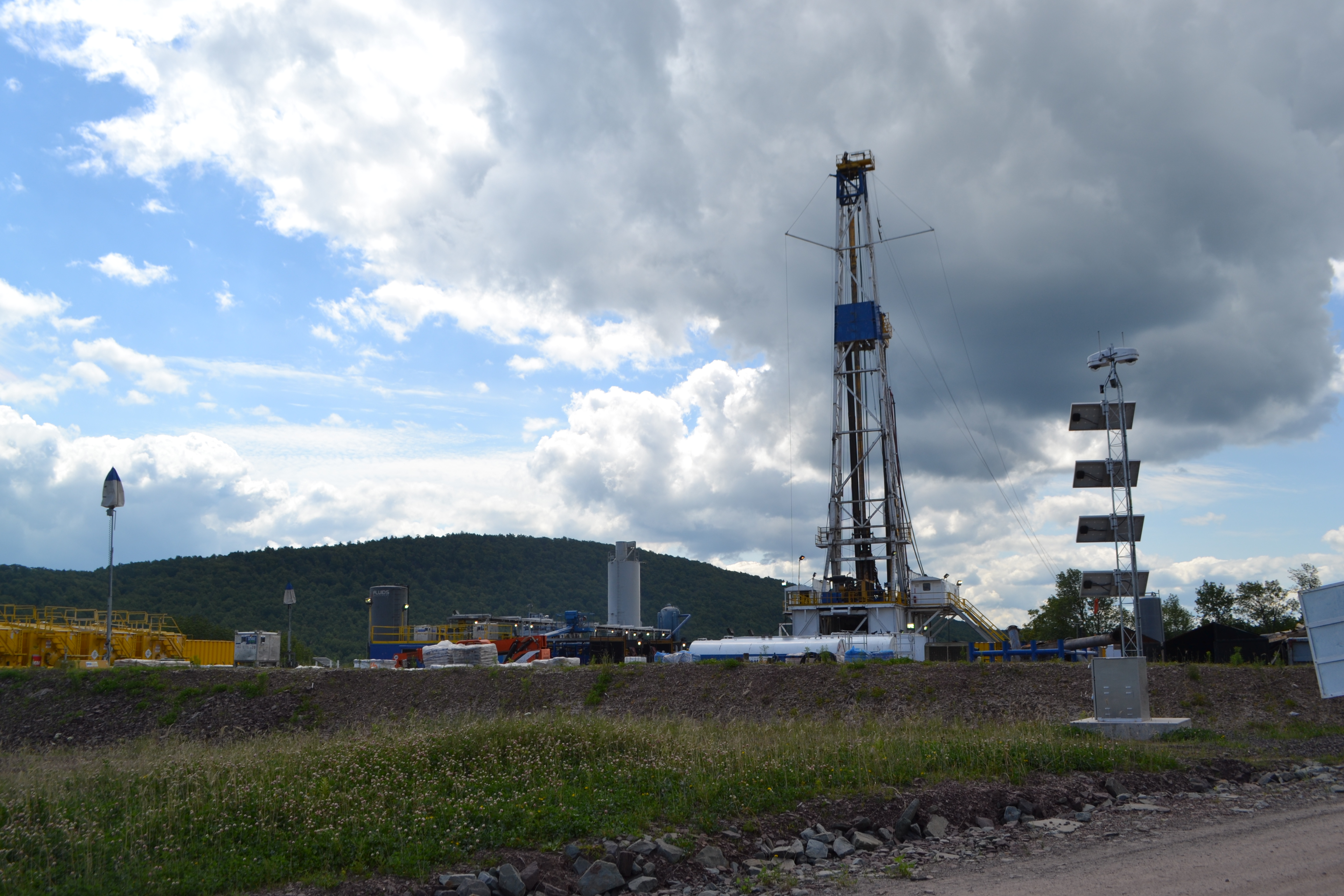- Haley Thomas.Iconography of the Cemetery
Month: November 2013
During the summer of 2013, I conducted research alongside Associate Professor of Management, Jamie Hendry with support of the Place Studies Initiative. Jamie and I decided to explore a hot topic: fracking. Specifically, we were curious about how landowners weighed the pros and cons of leasing mineral rights. As a student who studies Management and Gender Studies, I was interested in the gender component of how decisions are made.
In order to gain a better understanding of the power dynamics within relationships, I drew on a set of research on family relations. I also consulted a number of sources to learn about the process and history of hydraulic fracturing.
Jamie and I conducted a number of interviews of landowners in Lycoming, Sullivan, Bradford counties; most of the participants were approaching or enjoying retirement, and professionals who are directly or indirectly connected to the gas industry. None of the landowners had a well placed on their property, and most had leased dozens of acres.
There were a number of common themes we uncovered about people’s perception of fracking (when it wasn’t on their land):
- Overall positive perceptions of natural gas companies
- People see the tangible economic benefits around them
- Creation of a new meaning of what land is worth
- People who did not lease were depicted as having strong ideologies that prevented them from doing so
- People felt that their decision not to lease wouldn’t matter if everyone around them signed a lease
- Many expressed an interest in alternative energy sources, once the technology is developed affordably
- Landowners who leased feel pride in being an energy provider to their community and country
- Traffic was noted to be the most noticable change in regions with heavy fracking
Gender alone did not predict which spouse had more weight in the decision making process. In most relationships, the spouse with more decision making power was the one who was considered to be more of an “expert” on the subject, usually due to their occupation.
Another factor that influenced how couples made decisions was their perception of the purpose of land. Those who believed that land was best in a natural, pristine state had reservations about signing a lease, while those who saw land as an asset that landowners should get the greatest number of benefits from.
Research Questions
What do community members think the health needs are in Central Columbia School District?
What spaces currently exist for physical activity?
Will the presence of a track and activity center increase sustained, regular, physical activity by members of the community to a degree that physical health – specifically cardiovascular health, fitness, mental health, and a decrease in BMI of the student body – will be observable?
Which community organizations will influence the possibility of the Wellness Center improving health?
Project Formation
From May to August of 2013, a Bucknell University research team- composed of Carl Milofsky, Hayden Yancey, Wenhui Xiu, Zach Moon, Matt MCanear, Kety Silva and Brandn Green- developed a multiple methods research approach to answer these questions. Harry Mathias, the superintendent of Central Columbia School District, approached the Bucknell team, asking them to undertake a community impact assessment of a Wellness and Athletic Center.
The School District
The research is based upon first understanding the vision Superintendent Mathias has for the social and community role the school can play in the geographically bounded area of the district. In contemporary studies of rural society in America, schools are recognized as being central institutions in rural communities. The CCCSD is more than simply rural as it does not contain a population center where social services and community life can be centered. This project being undertaken by the district, which contains a broad understanding of community health, is fundamentally an attempt to build community in the district. Our research is oriented around understanding how this process happens, if community members understood the nature of the remodeling and expansion efforts, how and if community attachment corresponds to physical activity, and if this in turn may generate positive physical, emotional, and behavioral health outcomes.
Research Findings
The research team found that community members questioned the impact of the project, had consistently undefined views on health, shared theories of health promotion, and that policies and programs of institutions throughout the district will likely have a larger influence on increased physical activity of residents than will individual motivation to exercise.
Looking Forward
This research also is part of a long-term initiative to carry out comparative ethnographies and multi-method studies of eight to twelve communities and rural places in the Susquehanna Valley area. The team seeks to develop methodologies for doing this kind of research and the present project offers the most comprehensive opportunity we have had so far to do a complete community study. Measuring rural health goes beyond biometrics to include community variables like the density and character of local organizational programs, associational activity, and the symbolic sense of community shared by residents (Yousefian et al 2010).
The Central Columbia School District Health Impact Assessment Report:
Bucknell University Community Research Group, 2013
Carl Milofsky, Hayden Yancey, Wenhui Xiu, Zach Moon, Matt MCanear, Kety Silva and Brandn Green
Central Columbia School District — Health Impact Assessment Report
https://www.bucknell.edu/x83427.xml


